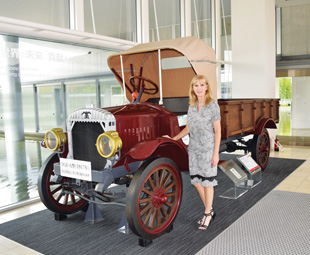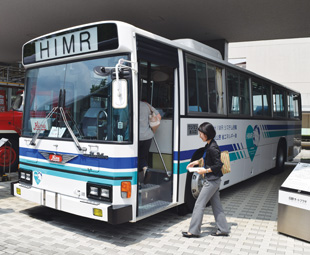Captivating history!

The Hino Auto Plaza is home to the company’s training facilities and its museum. CHARLEEN CLARKE found the latter quite fascinating
If you find yourself in Tokyo, the Hino museum is well worth a visit! It’s fairly compact (you can see the whole thing in two hours) but extremely informative.
The company’s history hails back to 1910, when the Tokyo Gas Industry Company was founded. Competition within the field of gas lighting was fierce though, and so it broadened its product line to include electronic parts, and renamed itself the Tokyo Gas and Electric Industry (TG&E).
In 1917, TG&E produced its first vehicles; a four-tonne army truck and the Model TGE-A truck. The latter was the first mass-produced truck in Japan and a replica is on display at the museum’s entrance.
 By 1937, TG&E was helping the Tokyo Imperial University build the Koukenki long-range research aeroplane. It briefly held the world record for long-distance flight.
By 1937, TG&E was helping the Tokyo Imperial University build the Koukenki long-range research aeroplane. It briefly held the world record for long-distance flight.
TG&E changed its name in 1942 to Hino Heavy Industry Company. “Hino” derives from the location of its headquarters in Hino city within the Tokyo prefecture.
In 1950, the heavy-duty TH10 eight-tonner was introduced. It was considerably larger than existing Japanese trucks, which rarely featured a payload of more than 6 000 kg.
Hino also produced cars. It started in 1953, building Renaults under licence. In 1961, it started building its own range of cars, called Contessa, as well as its first bakkie, called Briska.
Shortly after, in 1964, the Ranger KM, Japan’s first 3,5-t medium-duty truck, was introduced (this eventually became the 500 Series).
It was in 1967 that Hino joined the Toyota group, ending the production of Hino cars. The Briska remained in production until 1968, when Toyota released the Briska-based Hilux. By 1982 Hino and Toyota had merged to form the Toyota Motor Corporation.
 A significant milestone came in 1991, when Hino launched the world’s first mass-produced hybrid vehicle, the HIMR bus. The company also entered the Dakar Rally for the first time.
A significant milestone came in 1991, when Hino launched the world’s first mass-produced hybrid vehicle, the HIMR bus. The company also entered the Dakar Rally for the first time.
In 1992, the Super Dolphin heavy-duty truck received another redesign (the first was in 1981), becoming the Super Dolphin Profia, then later the Profia – today’s 700 Series.
In 1999, the Dutro light-duty truck was jointly developed with Toyota Motor Corporation to take over from the Ranger 2 and Ranger 3. It became the 300 Series.
By 2001, Toyota Motor Corporation had fully acquired Hino. Today, Hino trucks are manufactured in many countries, including South Africa, the United States, South America, Indonesia, Russia and China.
Published by
Focus on Transport
focusmagsa




